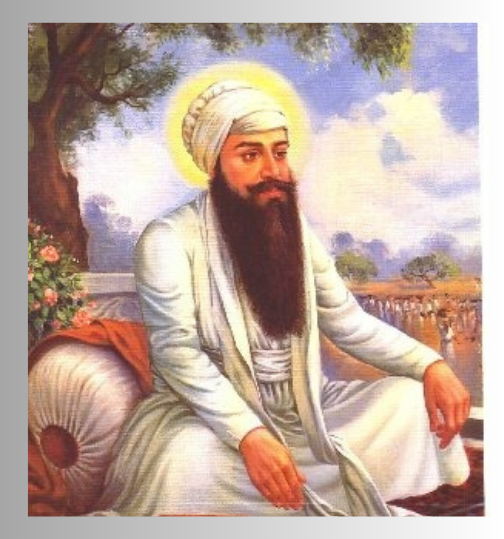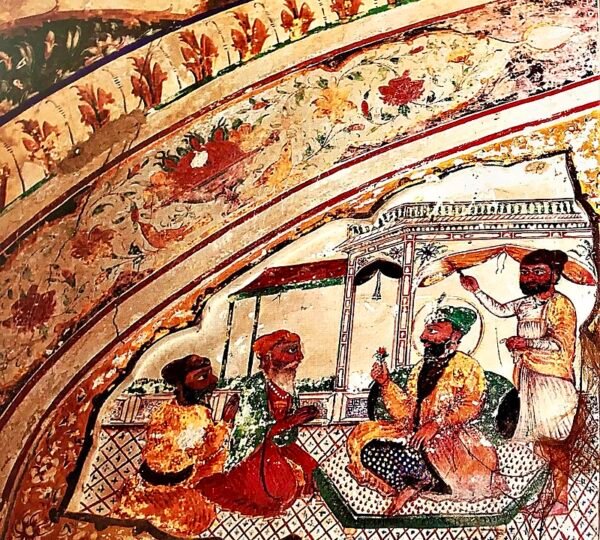Guru Ram Das Ji

Fourth Guru of Sikhism
Guru Ram Das Ji (24 September 1534 – 1 September 1581) was the fourth of the ten Sikh Gurus. He is remembered for his humility, devotion, poetry, and foundational role in establishing Amritsar, the spiritual center of Sikhism. He composed numerous hymns and continued the social and spiritual reforms of his predecessors.
Early Life
Guru Ram Das was born as Jetha in Lahore, Punjab (present-day Pakistan), into a Khatri Hindu family. His parents were Hari Das Sodhi and Anup Devi, but he became an orphan at age 7. He was raised by his grandmother, who supported the family by selling boiled grains.
In his youth, Jetha moved to Goindwal Sahib, where he met Guru Amar Das Ji, the third Sikh Guru. Deeply inspired by the Guru’s teachings, he became a dedicated disciple and sevadar (volunteer).
Marriage and Devotion
Impressed by his sincerity, Guru Amar Das married his daughter Bibi Bhani to Jetha. His service, humility, and devotion further deepened over the years. He actively contributed to the langar system, preaching Sikhism and engaging in community service.
Becoming the Guru
In 1574, Guru Amar Das Ji chose Jetha as his successor, giving him the name Guru Ram Das (“Servant of God”). His appointment continued the merit-based tradition of leadership, prioritizing devotion over family lineage.
Key Contributions
1. Founding of Amritsar
Guru Ram Das founded the city of Ramdaspur, which later became Amritsar, the spiritual capital of Sikhism. He purchased land for the city (partly gifted by Emperor Akbar) and initiated the construction of a sacred tank (sarovar) known as Amrit Sarovar. He planned the city as a center of Sikh devotion, trade, and equality.
2. Construction of Harmandir Sahib (Golden Temple)
He laid the foundation for the Harmandir Sahib, also known as the Golden Temple, which was later completed by his son and successor Guru Arjan Dev Ji. The temple was intentionally built lower than the surrounding land, with doors on all four sides to signify humility and openness to all communities.
3. Hymns and Sikh Scripture
Guru Ram Das composed 638 hymns, many of which are included in the Guru Granth Sahib. His hymns cover themes like devotion, humility, and the longing for God. His compositions are also part of the Laavan—the four hymns recited during the Sikh wedding ceremony (Anand Karaj).
4. Strengthening Sikh Institutions
He continued the manji system introduced by Guru Amar Das to organize Sikh preaching. He appointed spiritual leaders in various regions and reinforced langar (community kitchen) as a vital Sikh practice.
Relations with the Mughal Empire
Guru Ram Das maintained friendly ties with Emperor Akbar, who supported Sikh principles and even visited the langar at Goindwal Sahib. The Guru’s influence continued to grow across Punjab and beyond.
Succession and Death
Guru Ram Das passed away on 1 September 1581, at the age of 46. He appointed his youngest son, Guru Arjan Dev Ji, as his successor—the fifth Guru of Sikhism. Guru Ram Das is the only Guru whose son and father-in-law were also Sikh Gurus.
Legacy
Guru Ram Das is revered for:
- Founding Amritsar, the heart of Sikh spirituality
- Laying the foundation of the Golden Temple
- Composing the Laavan, a key part of Sikh marriage rituals
- Emphasizing humility, devotion, and service
His life represents a perfect blend of spiritual leadership and practical organization, making lasting contributions to the Sikh faith and community.
Here is a well-structured and moderately shortened summary of Guru Arjan Dev Ji, the fifth Guru of Sikhism, covering his life, spiritual work, and martyrdom

